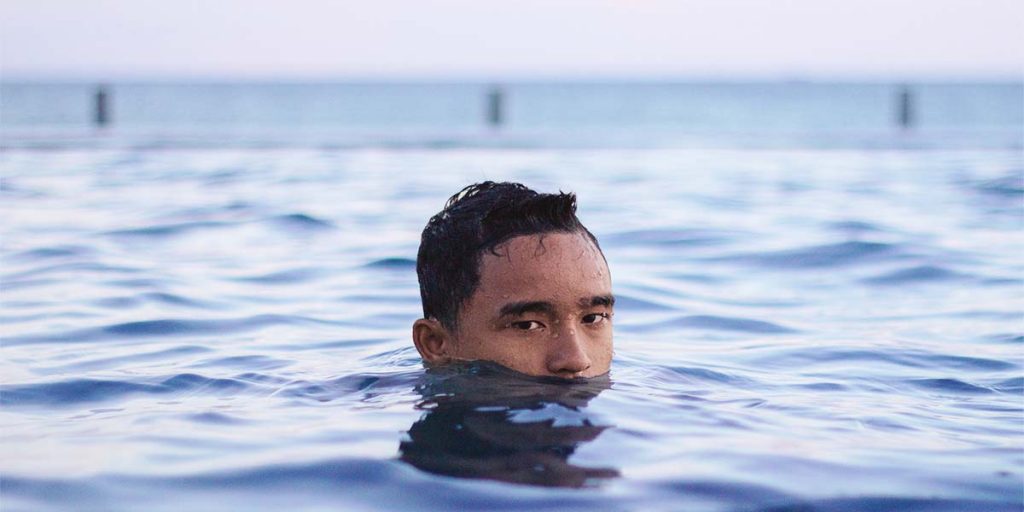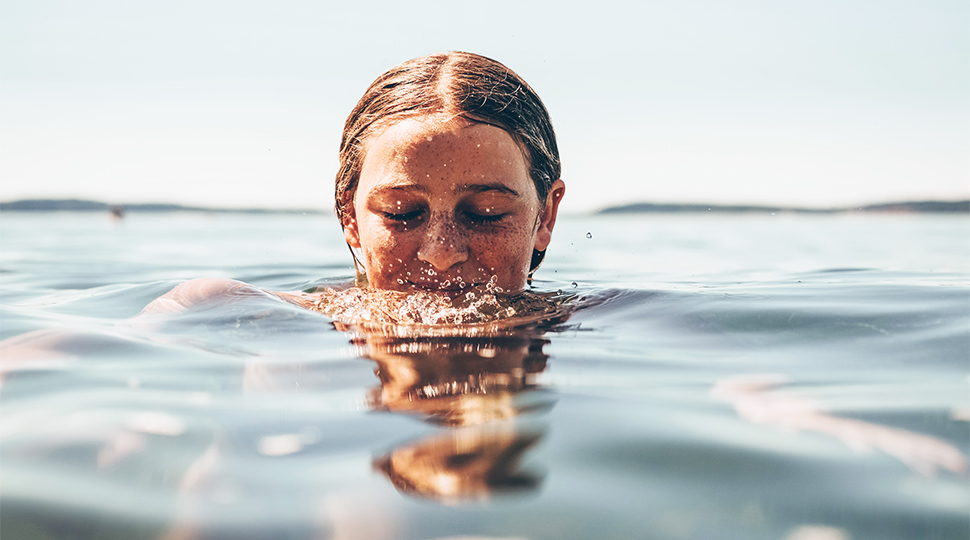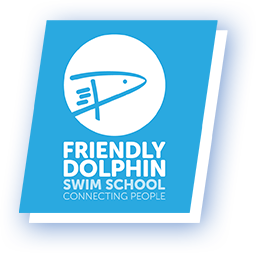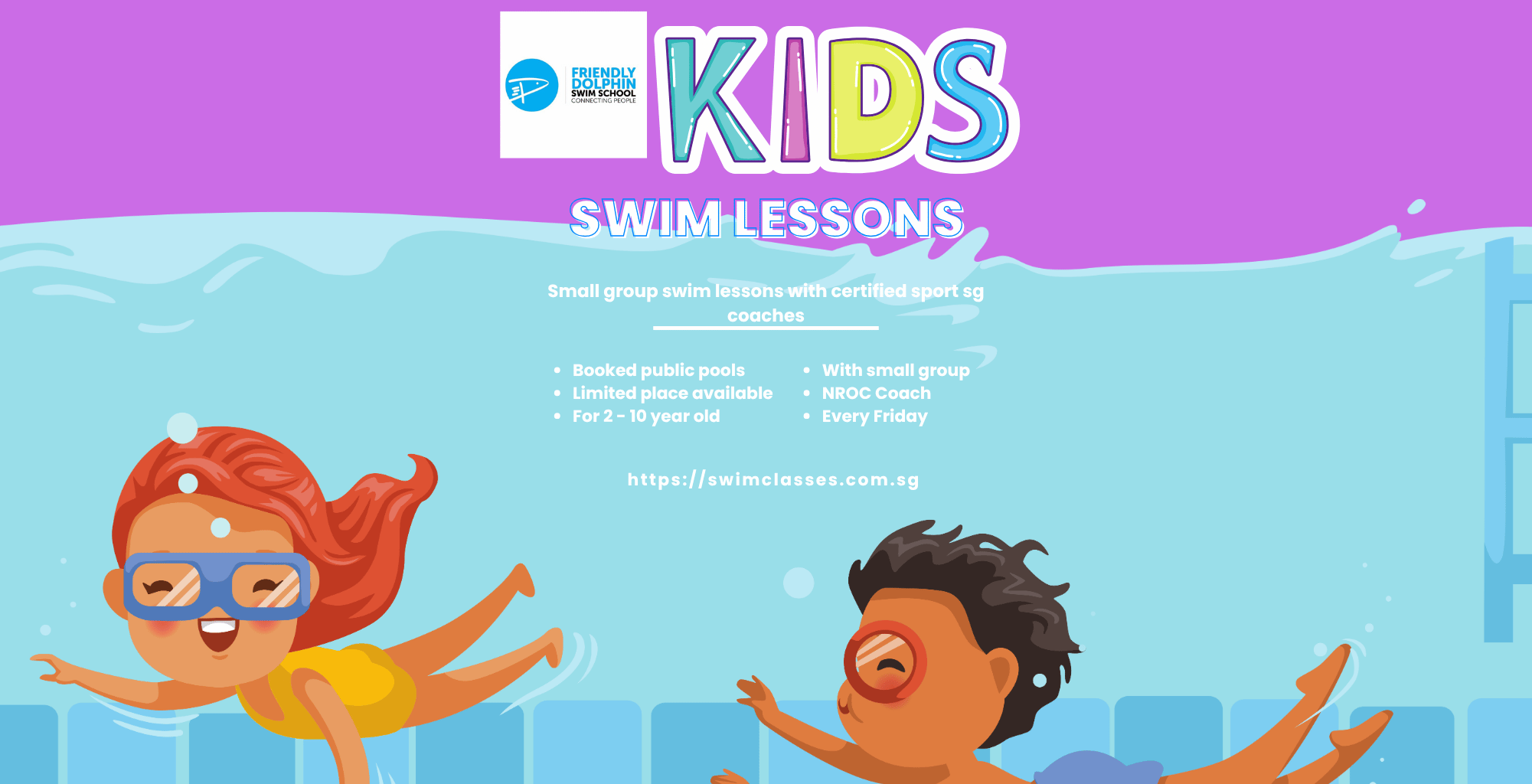
Should you worry about dry drowning after swimming lessons?
Many don’t realize that drowning can occur outside of a swimming pool. It’s a phenomenon known as “dry drowning” or “secondary drowning” that happens when someone breathes in small amounts of water during a struggle.
That triggers muscles in the airways to spasm which can make it hard to breathe. There have been many blogs and articles that have gone viral about secondary drowning, warning parents with cautionary tales while misinforming them at the same time. While uncommon, this is a potentially dangerous condition that every parent should know about and we wanted to set the record straight.
A parent approached us with her concern about her child who attends Friendly Dolphin Swim School. She asks:
Should we be concerned about dry/secondary drowning following lessons and if not, why?
We can safely teach all our little ones to survive in the water environment because of the lesson plan and also because of the flap at the back of the throat (epiglottis).
The epiglottis is in charge of differentiating other items like foods and water from the air. It opens and closes to let food go into the esophagus and air into the trachea. Sometimes when things slip into the trachea, and coughing will be the sputtering of our bodies kicking it back up, so it does not enter into the lungs.
At all times, our epiglottis will work to keep foods, water, and any other solids out from entering into the trachea, which is part of the respiratory system and not the gastrointestinal system.
Aspiration will only happen when the person is unconscious. For any reason that the person becomes unconscious, the epiglottis will stop working. This is when the water will enter into the trachea eventually into the lung.
When a person is conscious, it prevents this, and in certain cases, when it does go into the “wrong way,” it will cause a coughing reflex to help dislodge the bead of water.
In fact, water is aspirated only if a child is unconscious or underwater for a significant amount of time.
Aspiration will lead to traumatic effects like swelling in tissues of lungs and airways. When a person had experienced aspiration, they will not breathe normally, and coughing will persist for the next 20-30 minutes. Do seek medical attention and visit physicians when this occurs. If water enters the lungs and the person is not treated, they will give in after one or two days.
Reality Check On “Dry Drowning”
There are many cases of misinformation circulated online about “dry drowning,” and I think it is time we make it clear to everyone in this post, and clear up the understanding for good.
Earlier in June 2017, a child in the US died a week after apparently aspirating water while wading with his family. The media has called this a case of “dry drowning”, also called “secondary” or “delayed” drowning, in which a person initially seems fine after inhaling water but then dies hours or days later.
Now, this is just awful — no one is disputing that. But along with the horror of this story, there’s been a certain amount of media misinformation, and fear-mongering, that various pediatricians and ER physicians are now pushing back on.
This is not only to educate the public on the very real risks of drowning, but to get the word out on first aid and medical interventions, and to make sure that we’re all using the same terminology when we talk about drowning.
I came across this post by pediatrician Katherine Hensley, in which she provides what she calls a “reality check on dry drowning”:
“In short, your child is not going to go swimming, swallow some water, have no issues in the water whatsoever, and then suddenly die without warning 4 days later from ‘dry drowning’. I know the stories you’ve been reading, they’re all over our newsfeed too. I know how the thought of losing your child makes you have actual physical chest pain because it does that to me too. But we don’t want the kids of the world never going near the water again because their parents were frightened by a poorly researched Facebook article.”
There are issues with the media’s lack of differentiation between the words “swallowed” and “aspirated”, for one:
Swallowed water goes into the esophagus and down through the digestive tract. Swallowing chlorinated pool water may make you throw up but it will not make you die of flash pulmonary edema. ASPIRATION is when the water goes into the trachea and down into the lungs. In this case, the patient in question will have an episode of distress after they come out (or are pulled out) of the water. You will see it and you will KNOW they are not OK.
She also notes (as does this post written by Seth Collins Hawkins, MD, et al.), that there is no medically accepted definition of “dry drowning” or even “secondary” or “delayed” drowning. There is only drowning — which, in the medical world, can be fatal, non-fatal, or non-fatal with illness/injuries.
Drowning is a leading cause of child death, for sure, but the fear about “drowning with delayed mortality” (which is generally what people mean when they talk about dry drowning) as Dr. Hensley defines it, is overblown. Hawkins notes (reassuringly) that while experiencing symptoms after a drowning incident is relatively common, it is rare for these “minimally symptomatic” cases to progress to death. As for keeping an eye on these symptoms, he says:
Nonetheless, they can certainly deteriorate or progress, which is why we encourage people to seek care immediately when they have warning signs like chest pain. The warning signs for drowning are submersion or immersion followed by difficulty breathing, excessive coughing, foam in the mouth, and not acting normally.
There is also another Facebook account of a three-year-old who was in a spa when his mother turned her back is an example of secondary drowning. A spa is NOT a small pool. If the jets are on, the water is circulated by suction. The suction is strong enough to pull a small child under.
The bubbles created by the jets make it difficult for a child to look for the top of the water to come up, as they are taught in their lessons. The suction will cause the child to be pulled under repeatedly and choke, allowing water to enter the lungs (aspiration).
The child was under for an unknown amount of time (could have been 20 seconds, 30, seconds, or even longer) because no one fully witnessed the incident.
When his mother actually noticed him, she saw him bobbing up and down in turbulent water, trying to breathe, but rather than breathing air, he aspirated water into his lungs. This child had not had swim lessons, had not been taught breath control, and was DROWNING when he was rescued.
In all cases of secondary drowning, at some point, no one was watching or paying attention to the child. Even when you are in arm’s length of your child, you can never take your eyes off them, not for a second. Some have even been wearing water wings, which do not prevent a child from putting his mouth underwater.

Swimming Lessons & Prevention
Our swimming instructors never take their eyes off the students during the swimming lessons. We teach all babies breath control from the first swimming lesson, guiding all babies not to “drink” the water.
Our swimming instructors know that they are not aspirating water, and we are aware of the babies and know when they were swallowing water as they will always be right there at all times, assessing the babies.
That’s the bottom line. In addition, we are working for only 30 minutes (sometimes less), have our hands firmly around the baby’s chest, and are going slowly, always taking time to allow the child a good breath. We stop often to burp excess air from the tummy and check for breathing.
Occasionally our students swallow water, but the water goes into the stomach, not the lungs. Babies may have wetter diapers in the 2-4 hours after the lessons and occasionally may spit up the water they swallowed.
We hope that this explanation is helpful for your understanding of secondary drowning. Rest assured, our focus for each lesson is the safety of our students. And the reason we exist is to prevent the tragedy of childhood drowning.
To learn more about our programs and instructors, visit our website at https://swimclasses.com.sg or give us a call.
Supervision & Prevention
At the end of the day, the terminology isn’t the most important thing, which is, obviously, how to never have this happen in the first place. Supervising your kids goes beyond simply watching them: ER doctors urge touch supervision, which means always being within arm’s reach of a child, even when a lifeguard is present.
An adult should be assigned to each kid — it’s too easy to think, “Oh, 10 adults are here, someone will notice if a kid starts to drown,” because they might not, actually.
Beyond that, teach your kids to swim at an appropriate age, learn CPR, and don’t let the media scare you out of a good time at the beach.


